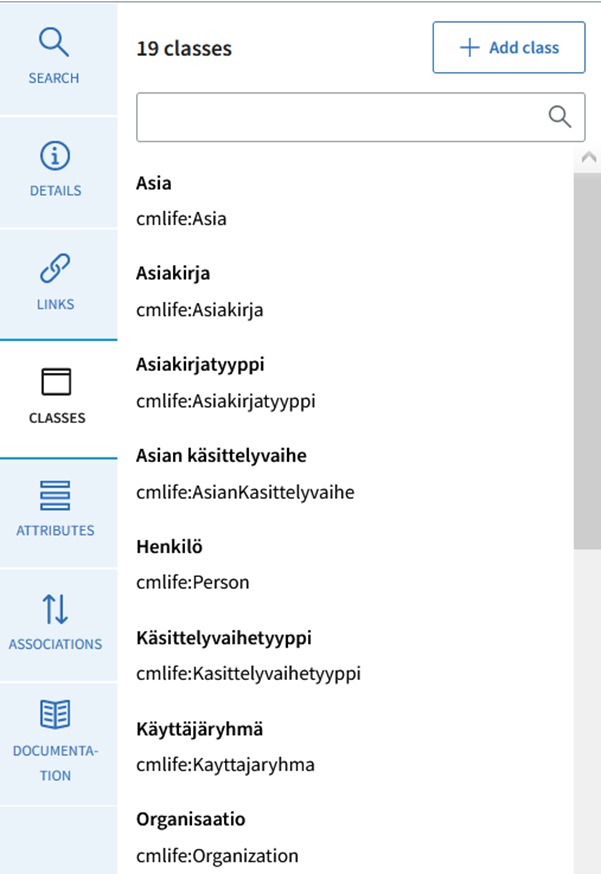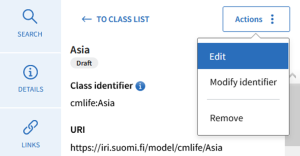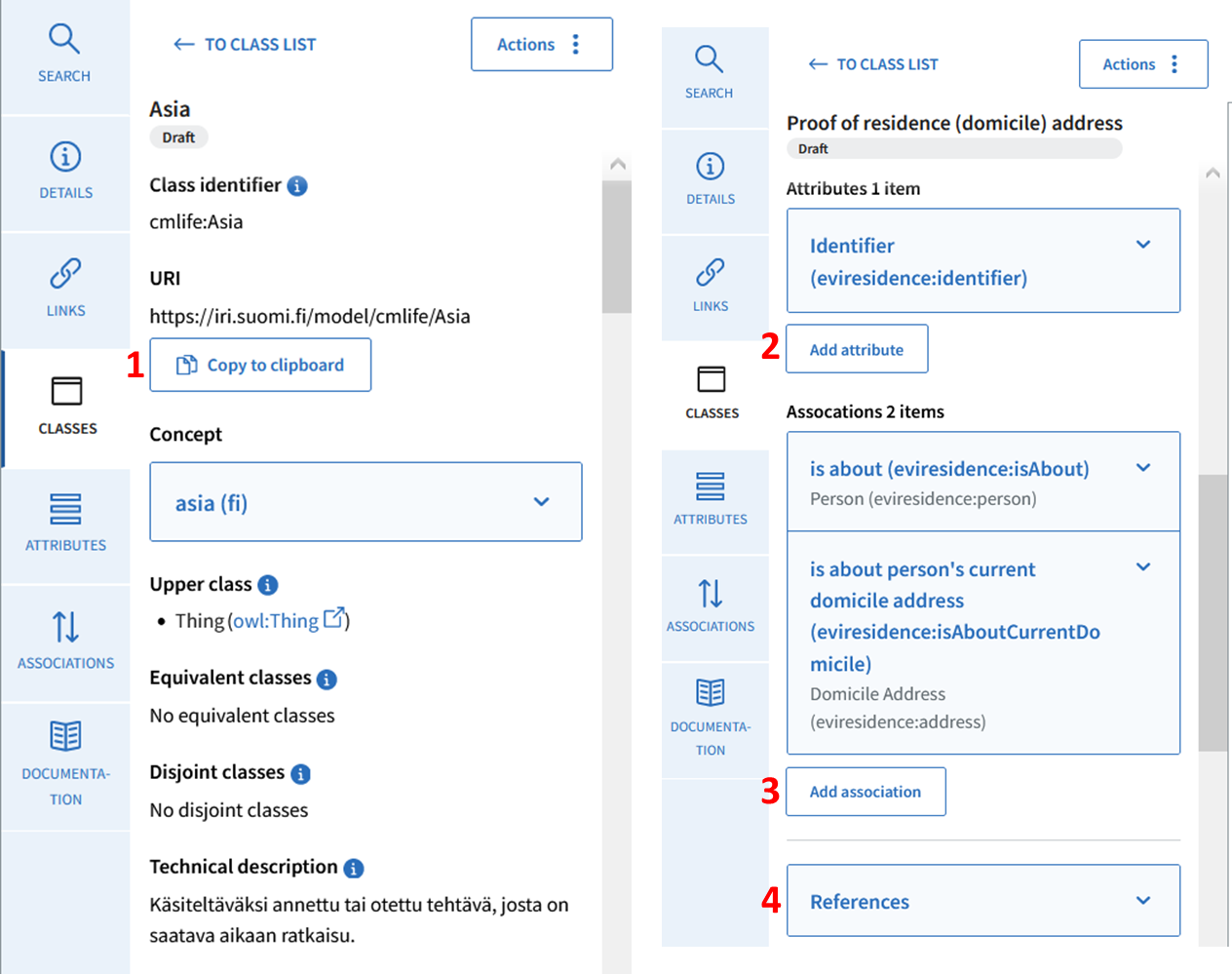The tool lists in the Classes page the number of classes as well as the list of classes that are included in the data model.
Click the title of the class to open more specific details of the class, for example:
...
- Equivalent classes: The name of the equivalent class and its link.
- The other classes that have meaning that is the same or almost the same as this class. For example, shoe - footwear.
- Disjoint classes: The name of the disjoint class and its link.
- The classes that cannot include same parts as this class (classes exclude each other). For example: the actor can either be a person or an organisation, but not both simultaneously.
- Technical description: Short description of the class and its usage.
- Attributes: List of attributes included in the class. Click the name of the attribute to open more specific information on the attribute.
- Associations: List of associations included in the class. Click the name of the association to open more specific information on the association.
- References: List of other resources that have referred to this class (used this class as a reference).
- Created: The day and time the class was created.
- Last modified at: The day and time the class was last updated.
- Work group comment:Comments and instructions for other users editing the information content on the class. This field is not publicly available.
- Contributors: Organisation(s) that own(s) the content and maintain(s) it in the Data Vocabularies Tool.
In the the Action menu, you can edit a chosen class or its prefix. You can also delete a class.
From the Classes tab, you can also
...


